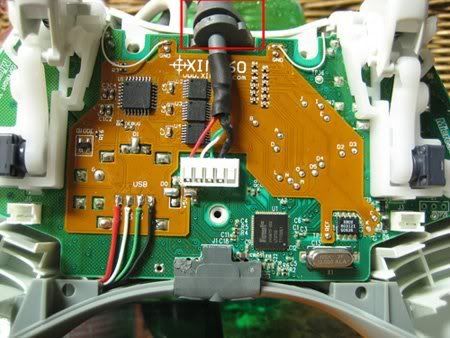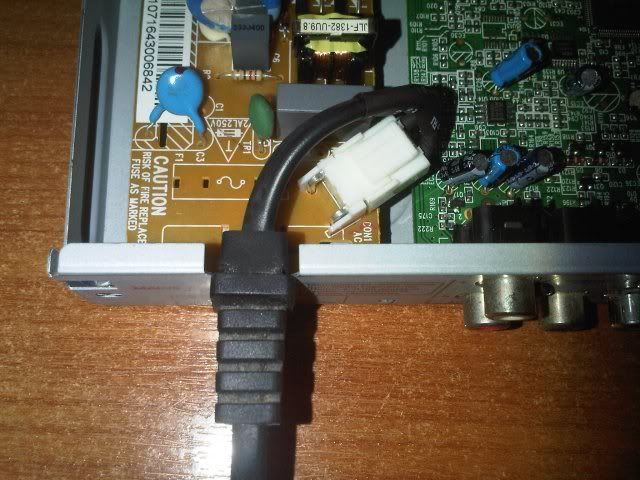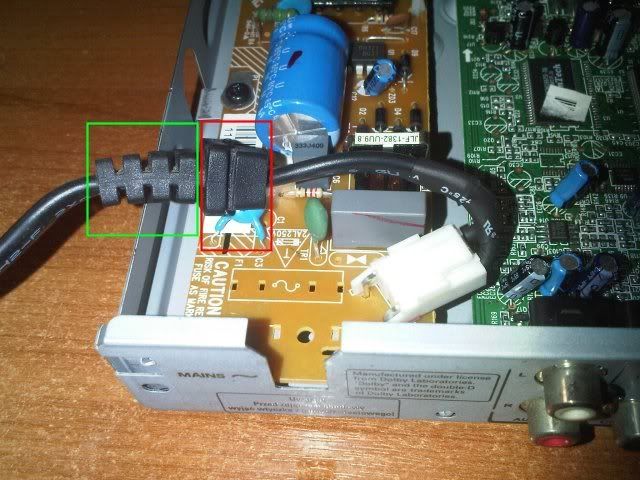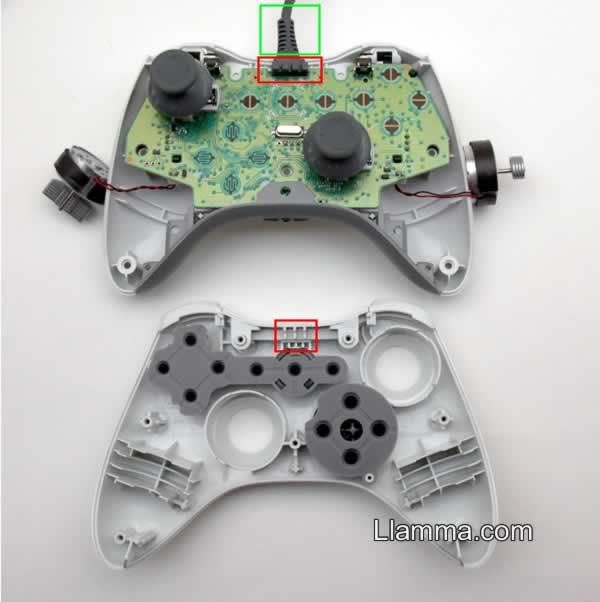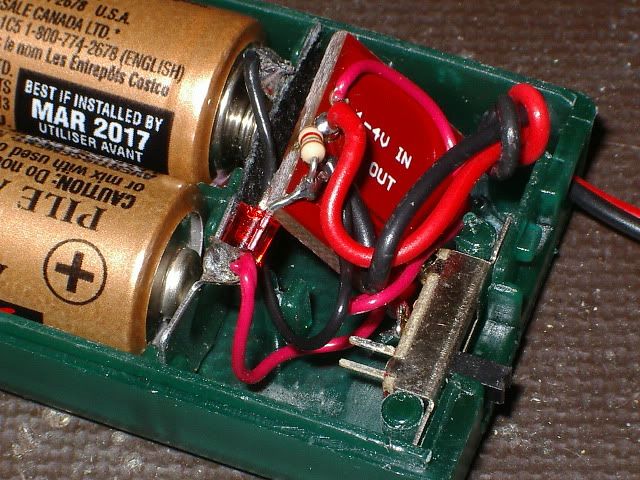Basically this's all stuff I've done before but for the first time with an original famicom.
Early pics:


Mostly finished video:
http://www.youtube.com/watch?v=RdB36eghRJc&feature=youtu.be
What's left to do: Build all the external ports and jacks into a project box.
Why I built this: I had the parts laying around and I thought it would be fun!
Specs:
This started out as an official nintendo 1989 famicom that I recently managed to repair (some random trace got damaged).
This system using an official nintendo rgb chip and produces almost completely jailbar free true rgb, s-video, and stereo sound with proper mixing and amping.
S-video is generated by a sony cxa2075 video encoder which produces the sharpest looking s-video I've ever seen, also I really like the colour encoding of the cxa2075.
I built a small circuit that divides the system master clock down to be able to drive the video encoder which removes colour bleeding over s-video.
You can realtime switch between the default and upgraded audio circuits using a hardware switch I installed.
I hardwired nes controller ports into the headers of where the famicom controllers normally connect, here's the schematic:

P4 is player one and P5 is player two. Just do the same thing for p5 to wire up the second player controller (ignore the mic pin for nes controller port wiring). This nes controller port wiring is 100% compatible with all games, some people wired up nes controller ports to the famicom expansion port but that doesn't work with some games (mario 2 us). My wiring works with everything and you no longer need to live with stupid hardwired famicom controllers where the cord comes out the side of the controller instead of the top like it should.
The 74ls373n has been removed with a precision socket installed so I dropped in a 74hc373 to get the powerpak running with the rgb setup. Thanks to acem77 for making this discovery. The playchoice pcb uses the 74hc373, that's where the nes compatible rgb chip comes from so I guess it's just something the rgb ppu needs.
The rf box has been removed and I have the system running using just a power jack, 7805 regulator, small heatsink, and a fuse. The 7805 and heatsink are bolted near the front of the case to make room for the added circuitry at the back.
What I learned from building this:
I learned a lot about the famicom pcb and how it's wired. The edge of the pcb is 5v so be careful not to think it's ground like most consoles. The connector for the rf box is interesting, one pin is the 5v fed from the regulator, the other pin is the 5v feeding back into the rf box circuit after you connect it using the power switch.
Adding distance between the ppu and the video encoder adds jailbars. Adding 5 or so inches of distance for the rgb to travel before hitting the video encoder added really big jailbars. Potentially this's a universal jailbar fix across all models of the nes / famicom which is fantastic news! Having the ppu signals fed into the video encoder at point blank range completely fixed the jailbars on this system. This's an awesome discovery! Unfortunately this means that getting rid of jailbars in some pcb revisions means relocating the entire ppu socket to get all this custom circuitry to fit like I had to do with this system.
This particular famicom (something-something-gpm-02) has a very similar audio circuit to the av famicom. The only difference is there's a little more low pass filtering with this model producing more bass and a little more muffle.
The famicom case has literally no extra space inside to fit any extra stuff which is why all the added ports and whatnot are hanging out the back.
Would I do this again?: Probably not unless someone is willing to pay a small fortune or if I somehow kill my system (it has a fuse so if something shorts it's easy to fix). I had to relocate the entire ppu socket to the back by wiring up 40 ide wires, I had to do so much extra work that it would be cheaper just buying an av famicom.
Was it fun making this?: F#ck yes! The results were fantastic, I learned so much about these systems and getting rid of jailbars and other video interference from doing this, wiring the nes controller ports worked out great too. The audio circuit on this kit I use sounds great with this pcb model, hopefully someday I can rework the av famicom audio circuit so I can re-create it on any model of the nes / famicom. I honestly didn't expect this to turn out so nicely.
Early pics:


Mostly finished video:
http://www.youtube.com/watch?v=RdB36eghRJc&feature=youtu.be
What's left to do: Build all the external ports and jacks into a project box.
Why I built this: I had the parts laying around and I thought it would be fun!
Specs:
This started out as an official nintendo 1989 famicom that I recently managed to repair (some random trace got damaged).
This system using an official nintendo rgb chip and produces almost completely jailbar free true rgb, s-video, and stereo sound with proper mixing and amping.
S-video is generated by a sony cxa2075 video encoder which produces the sharpest looking s-video I've ever seen, also I really like the colour encoding of the cxa2075.
I built a small circuit that divides the system master clock down to be able to drive the video encoder which removes colour bleeding over s-video.
You can realtime switch between the default and upgraded audio circuits using a hardware switch I installed.
I hardwired nes controller ports into the headers of where the famicom controllers normally connect, here's the schematic:

P4 is player one and P5 is player two. Just do the same thing for p5 to wire up the second player controller (ignore the mic pin for nes controller port wiring). This nes controller port wiring is 100% compatible with all games, some people wired up nes controller ports to the famicom expansion port but that doesn't work with some games (mario 2 us). My wiring works with everything and you no longer need to live with stupid hardwired famicom controllers where the cord comes out the side of the controller instead of the top like it should.
The 74ls373n has been removed with a precision socket installed so I dropped in a 74hc373 to get the powerpak running with the rgb setup. Thanks to acem77 for making this discovery. The playchoice pcb uses the 74hc373, that's where the nes compatible rgb chip comes from so I guess it's just something the rgb ppu needs.
The rf box has been removed and I have the system running using just a power jack, 7805 regulator, small heatsink, and a fuse. The 7805 and heatsink are bolted near the front of the case to make room for the added circuitry at the back.
What I learned from building this:
I learned a lot about the famicom pcb and how it's wired. The edge of the pcb is 5v so be careful not to think it's ground like most consoles. The connector for the rf box is interesting, one pin is the 5v fed from the regulator, the other pin is the 5v feeding back into the rf box circuit after you connect it using the power switch.
Adding distance between the ppu and the video encoder adds jailbars. Adding 5 or so inches of distance for the rgb to travel before hitting the video encoder added really big jailbars. Potentially this's a universal jailbar fix across all models of the nes / famicom which is fantastic news! Having the ppu signals fed into the video encoder at point blank range completely fixed the jailbars on this system. This's an awesome discovery! Unfortunately this means that getting rid of jailbars in some pcb revisions means relocating the entire ppu socket to get all this custom circuitry to fit like I had to do with this system.
This particular famicom (something-something-gpm-02) has a very similar audio circuit to the av famicom. The only difference is there's a little more low pass filtering with this model producing more bass and a little more muffle.
The famicom case has literally no extra space inside to fit any extra stuff which is why all the added ports and whatnot are hanging out the back.
Would I do this again?: Probably not unless someone is willing to pay a small fortune or if I somehow kill my system (it has a fuse so if something shorts it's easy to fix). I had to relocate the entire ppu socket to the back by wiring up 40 ide wires, I had to do so much extra work that it would be cheaper just buying an av famicom.
Was it fun making this?: F#ck yes! The results were fantastic, I learned so much about these systems and getting rid of jailbars and other video interference from doing this, wiring the nes controller ports worked out great too. The audio circuit on this kit I use sounds great with this pcb model, hopefully someday I can rework the av famicom audio circuit so I can re-create it on any model of the nes / famicom. I honestly didn't expect this to turn out so nicely.



